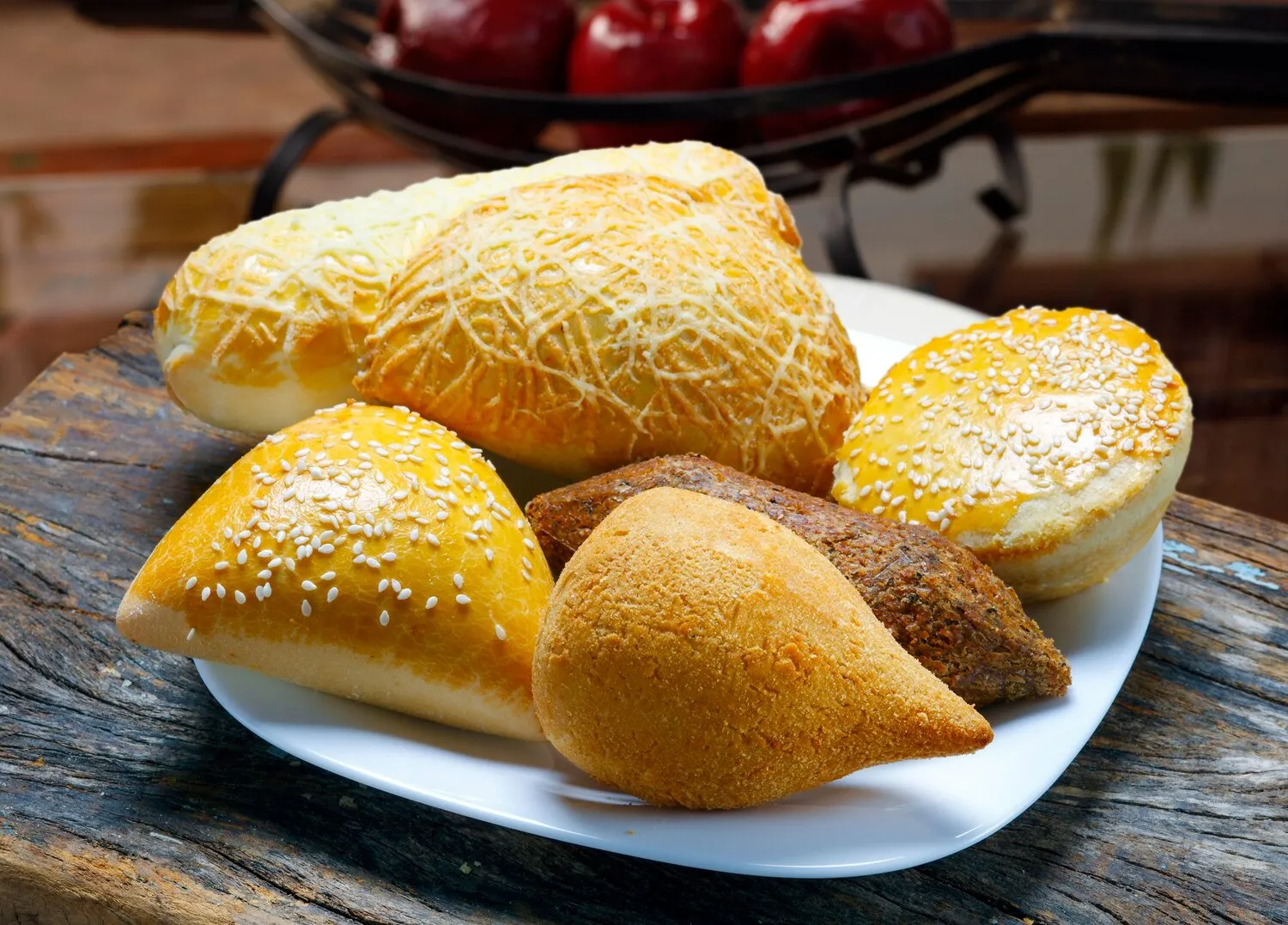
Salgados
Variety of savory pastries, including coxinha, risole, and pastel.
Nutrition Facts
* The % Daily Value (DV) tells you how much a nutrient in a serving of food contributes to a daily diet. 2,000 calories a day is used for general nutrition advice.
Le Gaban Cafeteria
Salgados emerged in Brazil, likely influenced by European culinary traditions, particularly Portuguese and French. The techniques of preparing filled and fried pastries were adapted to local ingredients and flavors, evolving into the diverse array of salgados enjoyed today. They became popular as affordable and convenient snacks, readily available across the country.
Salgados are deeply embedded in Brazilian food culture as popular snacks and party foods. They are widely consumed at celebrations, gatherings, and as a quick bite throughout the day, representing a significant part of Brazilian culinary identity and social gatherings.
Party Staple
Salgados are essential at Brazilian parties and celebrations, from birthdays to corporate events. They're a convenient and crowd-pleasing option for feeding large groups.
Street Food
Salgados are widely available as street food, sold in bakeries, cafes, and from street vendors. They provide an affordable and quick meal option for many Brazilians.
Regional Variations
While the basic forms of coxinha, risole, and pastel are ubiquitous, regional variations exist in fillings and seasonings, reflecting local culinary preferences and available ingredients.
Salgados offer a diverse range of savory flavors, from creamy chicken and cheesy fillings to seasoned ground beef and hearts of palm. The flavor profiles are generally rich and satisfying, often enhanced by herbs, spices, and the crispy, golden-brown exterior achieved through frying.
The flavor of coxinha largely depends on the chicken filling, usually shredded and seasoned with onions, garlic, parsley, and sometimes catupiry cheese. Risoles exhibit flavors based on the fillings, like cheese and ham, ground beef, or shrimp, frequently incorporating herbs and spices. Pastéis are known for their crispy, flaky crust and diverse fillings, ranging from ground beef and cheese to hearts of palm and pizza-style toppings, reflecting a mix of savory and sometimes slightly sweet or spicy notes depending on the filling.
Dough Consistency
For pastéis, use a dough that is thin and elastic for a crispy crust. Avoid overworking the dough, which can make it tough.
Frying Temperature
Maintain a consistent oil temperature during frying (around 180°C or 350°F) to achieve a golden-brown color and prevent the salgados from becoming soggy.
Filling Moisture
Ensure the filling is not too wet to prevent the salgado from becoming soggy. Drain excess liquid from fillings like ground beef or shrimp before enclosing them in the dough.
Explore additional Pastry dishes and restaurants
Explore PastryDiscover top dining spots and culinary experiences in São Carlos.
Explore São CarlosLearn more about the food culture, restaurant scene, and culinary heritage of Brazil.
Explore Brazil
